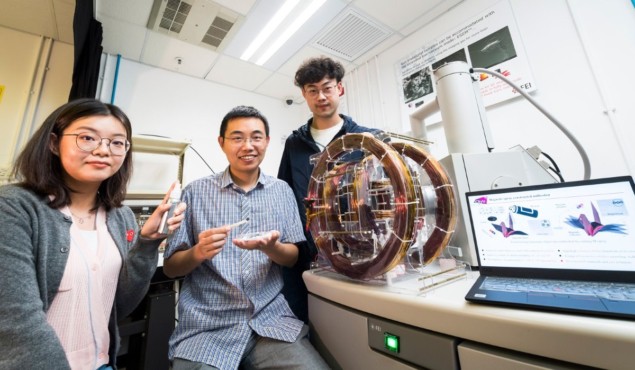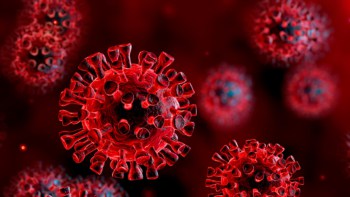
It is thrilling to live at a time when robots the size of small insects, known as millirobots, can open up new avenues of research. Such millirobots can be finely tuned to exhibit real-life locomotive behaviour, such as crawling and walking, and find use in biomedical applications.
The millirobots’ existence is thanks to a joint effort between two research groups in China. Their research, published in Science Robotics, took advantage of recent materials developments to employ magnetic fields as a driving mechanism. This approach enabled the team to design a variety of one-, two- and three-dimensional objects that, when coated with a magnetically drivable film, can simply be actuated by a magnetic field. More surprisingly, the novel millirobots can also be disintegrated upon command, using an oscillating magnetic field in an aqueous environment.
Millirobot composition
The two teams of researchers, led by Yajing Shen from the City University of Hong Kong and Xinyu Wu at the Shenzhen Institutes of Advanced Technology at the Chinese Academy of Sciences, created the millirobots by coating the surface of a target object with an adhesive agglutinate magnetic spray (M-spray). Considering the required degree of control over the robots and their scale, the researchers thought that this adhesion strategy could efficiently overcome the millirobots’ deformability constraints, irrespective of the size or shape of the targets.
The M-spray consists of polyvinyl alcohol (PVA), gluten and iron particles. The PVA and gluten provide the self-adhesive ability of the M-spray (referred to as M-skin). The iron particles, meanwhile, provide the magnetic component, responding to the direction and strength of an applied magnetic field that acts as the driving mechanism. The M-spray can create a film that’s thin enough (100 to 250 µm) to not interfere with the target’s original size, structure or morphology.
The researchers tested their devices under different magnetic field strengths (0 to 200 mT), demonstrating that their inanimate designs could be transformed into walking, rolling, crawling and flipping millirobots. What’s more, the researchers can reprogramme the millirobots’ navigation ability on demand. This reprogramming depends upon the direction and strength of the applied magnetic field, together with the distribution and alignment direction of the magnetic particles.
Potential for biomedical application
Since all the components of M-spray, namely PVA, gluten and iron particles, are biocompatible, the researchers sought to test the feasibility of their millirobots for biomedical applications, such as drug delivery. For this, the team performed in vivo experiments in anaesthetized rabbits, using radiology imaging to track the route of a drug encapsulated in an M-spray-coated capsule. When the capsule reached the target site, the researchers disintegrated the M-spray coating by applying an oscillating magnetic field. As its raw materials are biocompatible, the disintegrated coating can be absorbed and excreted by the body with little consequence.
To increase the stability of the M-spray-coated drug-delivery capsule in highly acidic environments, the researchers plan to replace the iron particles with nickel particles in the future. Preliminary findings have shown that this can prolong the stability of the capsule from eight to 30 minutes.
“Our experiment results indicated that different millirobots could be constructed with the M-spray adapting to various environments, surface conditions and obstacles. We hope this construction strategy contributes to the development and application of millirobots in different fields, such as active transportation, moveable sensor and devices, particularly for the tasks in limited space,” says Shen.



